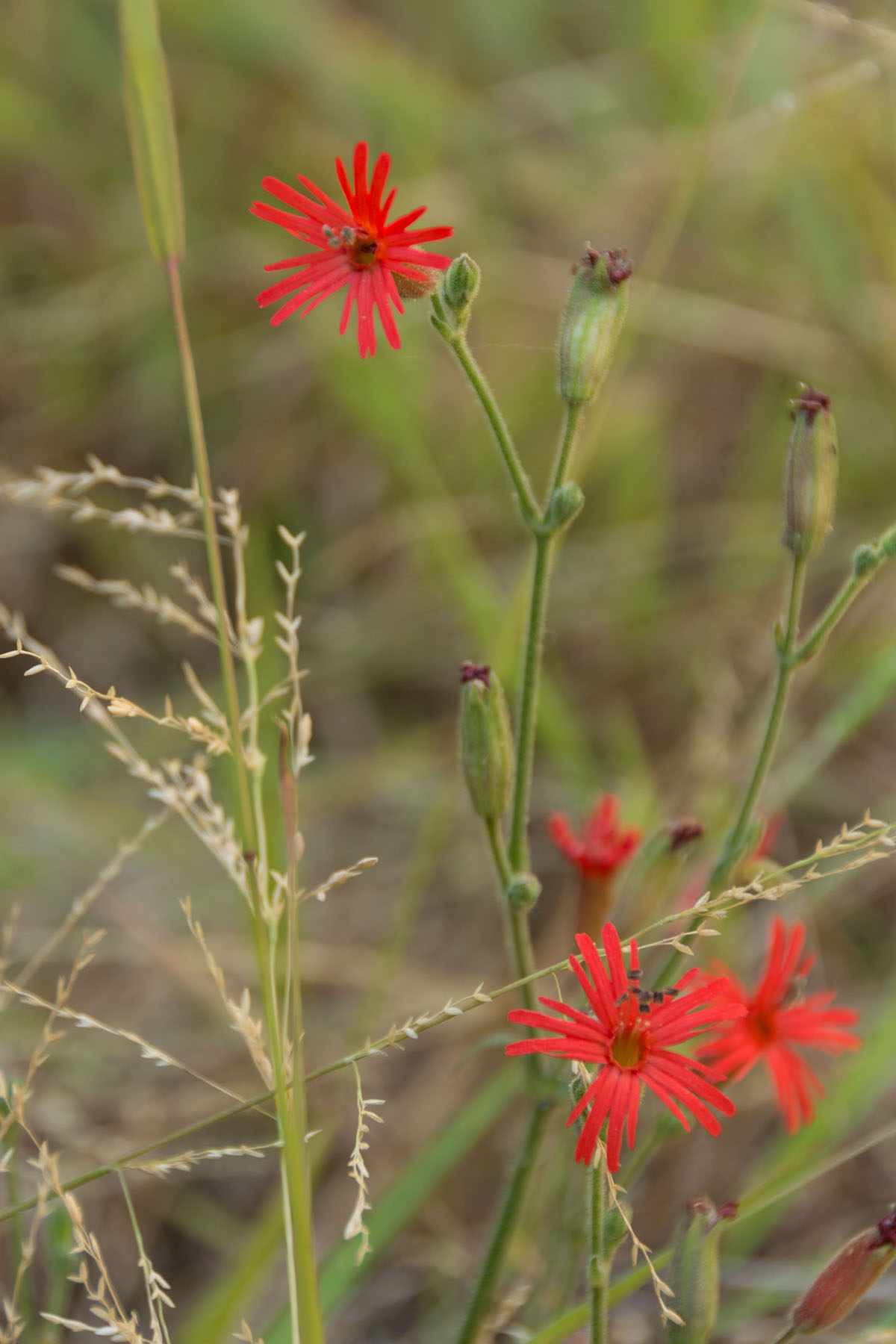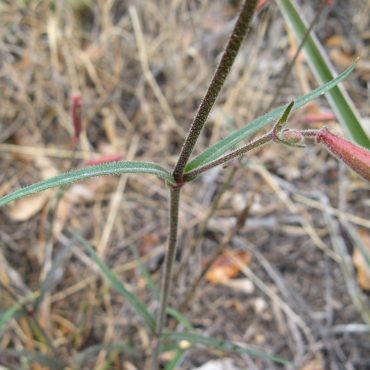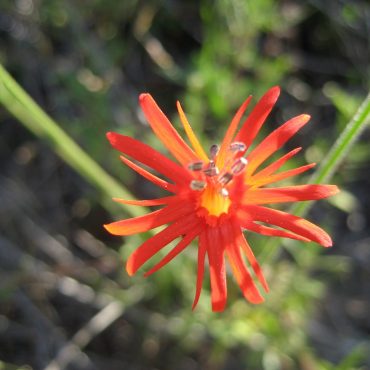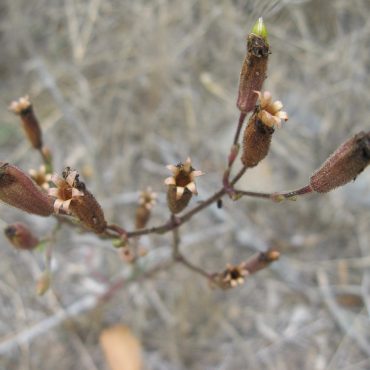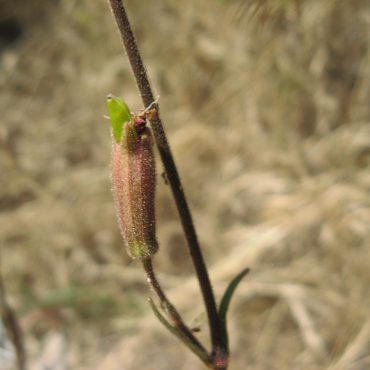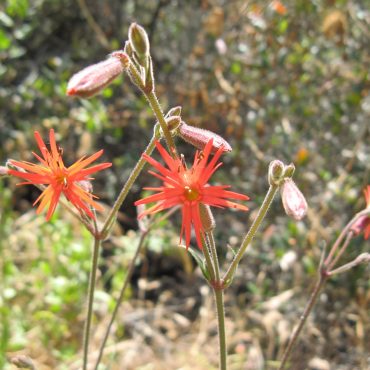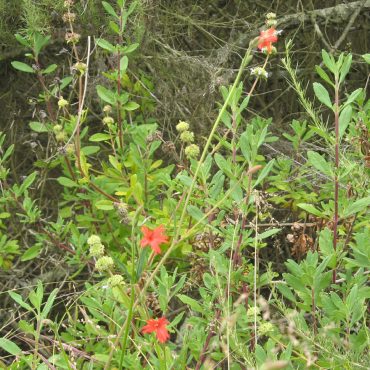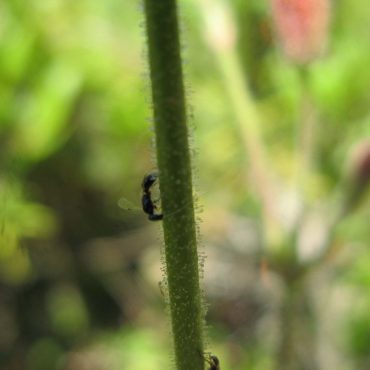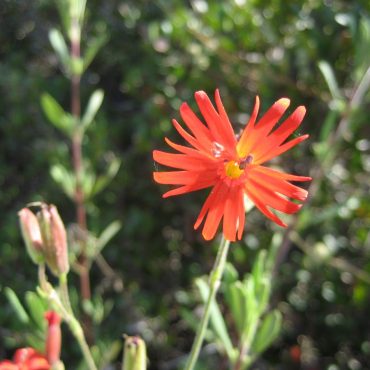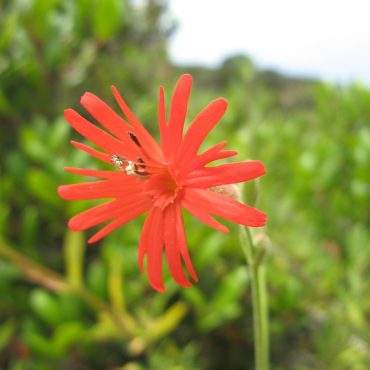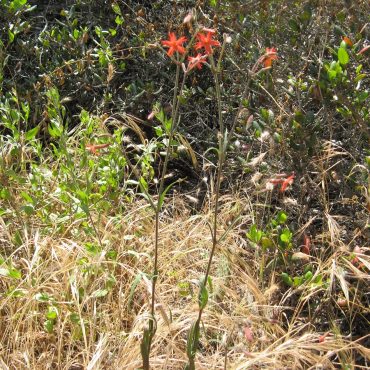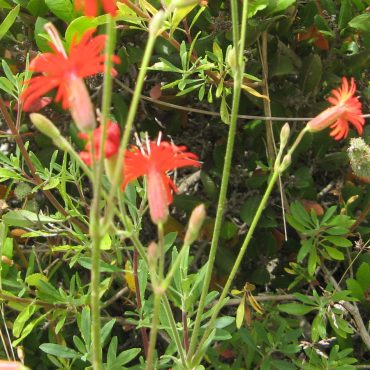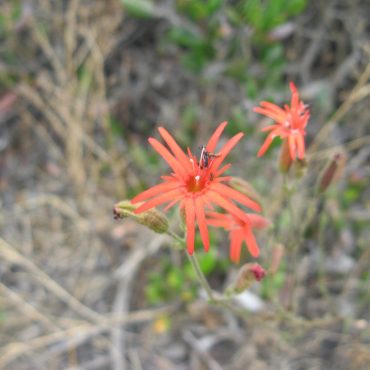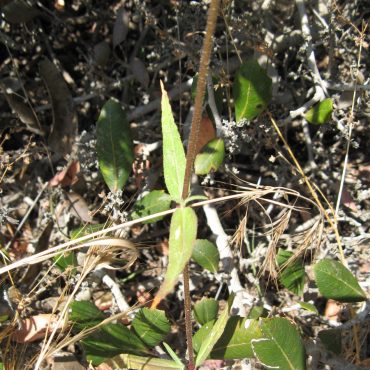Southern pink is a short-lived perennial herb, usually less than two feet high, with one to several stems from a thick taproot. Leaves are rather sparse, lanceolate and opposite at swollen stem nodes. Lower leaves may reach 4.5 inches; upper leaves are smaller. The plant is covered with glandular hairs that exude a sticky substance.
A few flowers are arranged in a loose cluster at the ends of branches. Five sepals are fused along most of their length, forming a narrow urn-shaped calyx with five roundly triangular lobes at the top. Flowers are bright red. There are five petals. Each has a long narrow base that flares outward at the top of the calyx and is deeply divided into linear fingers at the outer end; our plants most commonly have four lobes; often the two in the middle are longer than the others. The entire corolla is about one inch (2½ cm) across and has the appearance of a ragged fringe. Below the fringe, at the flower’s throat, each petal has two small red appendages that form a collar around the throat. Flowers are bisexual with ten stamens about as long as the petals, and which tend to be grouped at one side of the flower. There is one sausage-shaped ovary, which is pale yellow-green or green at the top and has three whitish styles. The major flower time is May to July,1 although an unusually wet summer in 2015 prolonged the flowering into September.
The fruit is a dry capsule, about 5/8 inch (1.6 cm) long. The developing fruit is obscured by the persistent calyx until just before maturity when the green ovary can be seen pushing out from the enclosing calyx. The mature fruit splits at the top into six triangular teeth, exposing numerous small red-brown seeds.

